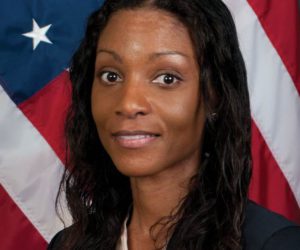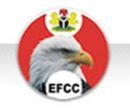The work we do at GAO
AS SOME of you may already know, GAO is the audit and investigative arm of Congress. It is an independent, nonpartisan agency that exists to support Congress in meeting its constitutional responsibilities.
GAO also works to improve the performance of the federal government and ensure its accountability to the American tax payer. We conduct the majority of our work at the request of committee leadership or through legal mandates.
For many years, I worked in GAO’s Financial Markets and Community Investment mission team, working the financial crime beat, focusing on BSA/AML issues and oversight. I now work in the Forensic Audits & Investigative Service team within GAO, using data analytics and investigative techniques to analyze fraud, waste, and abuse in federal programs. For me, the most interesting place is where those to streams cross—where financial crime risks in markets and federal programs intersect.
And in keeping with the focus of this year’s summit, let’s take a quick tour, if you will, through recent GAO work to get a view of what’s on the mind of the minders, in terms of innovation and technology in the financial crime space.
Much like the experience of our private sector colleagues, fraud is a growing problem for federal, state, and local government entities.
According to the 2022 U.S. National Money Laundering Risk Assessment, and all its preceding editions, Fraud, both in the private and public sectors, continues to be the largest driver of money laundering activity in terms of the scope of activity and magnitude of illicit proceeds, generating billions of dollars annually.
Treasury Department data indicate that U.S. financial institutions subject to BSA/AML requirements, filed roughly 2 million fraud-related SARs in 2022. Furthermore, it would seem that professional cybercriminals and other fraudsters are becoming more and more sophisticated and organized in their attempts against the private and public sectors.
These relentless advances, along with the sudden expansion and escalated speed of delivery of government benefits and related spending (nearly $5 trillion in just a year) in response to the pandemic, has led many experts to believe fraud risks will continue to escalate throughout all levels of government.
And all of this is occurring amidst the other critical financial crime issues, plaguing global markets and geopolitics—Russian sanctions, human trafficking, narcotics trafficking, crypto fraud and money laundering…I could go on and on.
So what’s on the mind of the minders—those over oversee the overseers, the federal financial supervisors and federal program managers?
Well, in the 117th Congress, the prior Congress, we saw interest in a few financial crime-related areas that required innovative approaches and tools and will likely carry over into the current Congress, the 118th. Among the top issues remains tackling the unprecedented levels of fraud associated with pandemic relief programs.
‘We found that out of 5,482 financial institution lenders that participated in the Paycheck Protection Program, 103 such lenders issued loans to businesses associated with fraud-related court cases. Lenders issued 431 loans (totaling an estimated $181.6 million) to borrowers later charged with fraud,money laundering, or identity theft’
For our part, at GAO, in response to work mandated by legislation, we have undertaken new approaches to help us analyze fraud and fraud risks in these programs.
For example, we leveraged a Conceptual Fraud Model that we published in January of 2022, which systematically organizes the key characteristics commonly found in fraud schemes that affect the federal government. It includes information on fraud scheme participants, activities, mechanisms, and impacts involved in these schemes.
We applied a modelling approach, referred to as an ontology, typically used in biomedical research. We developed the model using Protégé, which is a free, open source software developed by the Stanford Center for Biomedical Informatics Research at the Stanford University School of Medicine. It provides a graphic user interface that can be used to review these types of conceptual models.
We used our model to analyze charges filed by the Department of Justice, DOJ between May 2020 and February 2021 in work we conducted on fraud risks in two of the Small Business Administration’s pandemic relief programs.
This approach allowed us to examine in detail the publicly-announced charges for over 100 fraud-related cases associated with the programs. We analyzed charges against at least 170 defendants filed in federal courts.
We found that out of 5,482 financial institution lenders that participated in the Paycheck Protection Program, 103 such lenders issued loans to businesses associated with fraud-related court cases.
Specifically, these lenders issued 431 loans (totaling an estimated $181.6 million) to borrowers who were later charged with bank fraud, wire fraud, money laundering, or identity theft, among other charges.
Not to get too far into the weeds about this, but through this analysis, we also found that five of the103 lenders issued almost 50 percent of the loans to borrowers who were charged by DOJ with fraud-related crimes, accounting for an estimated $93 million.
We currently have ongoing work that, among other things, expands the scope of this analysis to cover charges publicly announced over a longer time period and goes into greater depth and detail in analyzing characteristics of the fraud schemes and the lenders.
‘GAO issued work last year, on the increasing use of virtual currencies, peer-to-peer mobile payments, and online marketplaces by drug and human traffickers’
We have also undertaken an extensive data-matching analysis of these program data at the loan level, and other datasets that allow us to identify fraud-risk areas, complementing our analyses of the Small Business Administration’s policies and procedures and our ontology analysis.
Panning over to fraud and technology in the private sector, late last year, during the prior congress, the House Committee on Financial Services held a hearing on the collapse of FTX and the related fraud and other financial crime issues, as well as the oversight implications of digital assets in general.
Just last week, the Senate Banking Committee similarly held a hearing on these issues, signaling continued interest. GAO issued work last year, on the increasing use of virtual currencies, peer-to-peer mobile payments, and online marketplaces by drug and human traffickers. This too is quite likely to continue during the current congressional session.
In the near future, GAO will also take on work related to the development and implementation of the registry of beneficial owners in the United States.
Division F of the National Defense Authorization Act for Fiscal Year 2021 set out, among other things, the 7 years of audit reports for GAO to submit to Congress, aimed generally at assessing the design, access, effectiveness, and security of the registry.
Among other approaches, we will explore how we might be able to incorporate publicly available legal entity datasets into our tools and methodologies as we design and carry out our work in that space.
Based on the information about its priorities from the new majority of the House Committee on Financial Services, I think we can count on seeing hearings that address the exploitation of digital assets and consumer payments by malign state actors and criminal organizations.
I think it would be very interesting from a research perspective to examine risks to consumers, taxpayers, and national security policy posed by new technologies, such as deep fakes and artificial intelligence, when used by criminals and malign state actors to defeat fraud controls and national security objectives.
That is just my particular area of interest at the moment, but it will be very interesting to see what policy discussions develop over this new congressional session.
I wish we had much longer, as there are so many other areas we could discuss. But I will end things here for now.
However, I encourage you to sign up for updates from our website or follow us on social media, to learn about our latest reports and testimonies on these and many other important issues.
Thank you AML Intelligence, for allowing me to help bring this wonderful event to a close. This is a very special event. I am so honoured to be a part of, and support, such an accomplished group of women working in this challenging space.
Disclaimer: I would like to thank AML Intelligence for the kind invitation to return this year to the Women in FinCrime Summit. Once again, I’ll have to make the disclaimer that although I am sharing information on some of my work and that of my colleagues, the comments I share today are my own and not those of my employer.
For the official word from the U.S. Government Accountability Office or GAO, I refer you to our website, gao.gov, where you can find all our reports, testimonies, legal opinions and decisions.
Share this on:
Follow us on:












